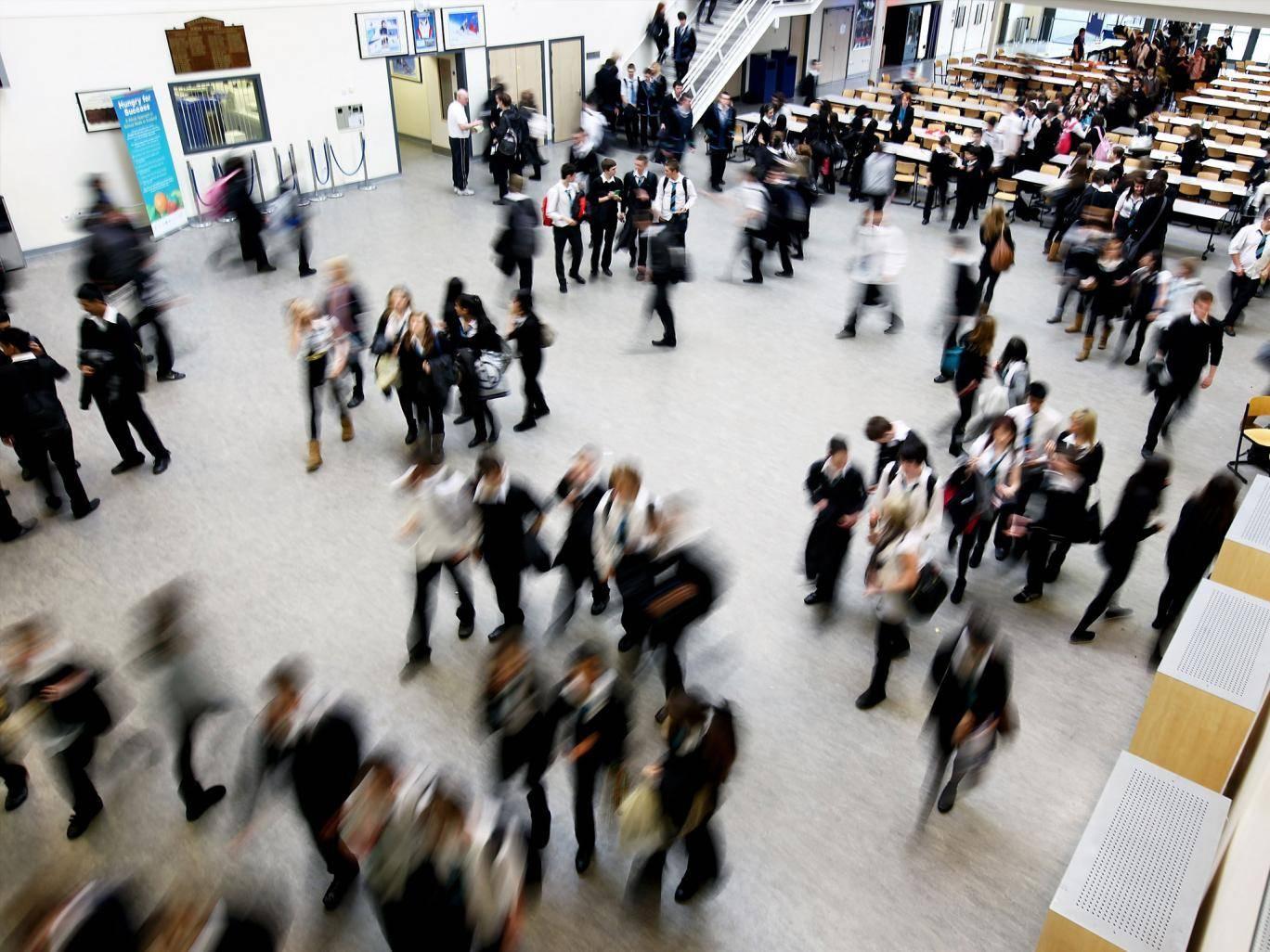Pupils being taught in damp and crowded classrooms as UK schools run out of space, survey suggests
'The heating often does not work in our temporary classrooms and children sit in coats to learn'

Pupils are being taught in damp, cold classrooms in schools that are rapidly running out of space, according to a new survey of teachers.
Some children have had to resort to wearing coats in lessons to keep warm, while others have been forced to do their work on the floor because there are simply not enough chairs and desks.
Carried out by the NASUWT teaching union, the survey found that almost three in five teachers have witnessed a physical deterioration of the school building they work in.
Seven in 10 (71 per cent) suggested that there are signs of leaks, damp or mould around their school, while just over half (55 per cent) said the same about their classrooms.
“The school is too small for the number of pupils. It is damp and cold," one teacher said. "I have to have a dehumidifier running constantly in my room. There is asbestos in the roof space.”
Meanwhile, a fifth of teachers say that students have had to be taught in temporary learning spaces – such as portacabins – to cope with a growing number of pupils.
Another teacher said: “We have 2 old mobile classrooms. They have been rapidly declining. The heating often does not work and children sit in coats to learn.”
It comes just weeks after official government figures showed that secondary schools in England are facing a boom in pupils, with numbers set to rise by more than 600,000 over the next few years.
The poll, of more than 1,200 NASUWT members, who will meet at their annual conference in Birmingham, revealed that more than half do not have enough room for pupils to move around the classroom safely and for effective learning to take place.
And almost three-quarters said the size and layout of the school does not help pupil behaviour.
“We have had to implement crowd control one way systems because otherwise it was absolutely dangerous for the students changing classes - not to say that there isn't a bit of a crush even with this,” a London teacher said.
Another added: “Too many children on too small a playground means more incidents at playtimes.”
Nearly half said that the number of pupils at their school has significantly increased in the last five years. And students in some cases have had to sit on the floor as there are not enough chairs.
Chris Keates, general secretary of the NASUWT, said: “Our children and young people deserve a learning environment which enhances their experience and provides them with the fit-for-purpose spaces and facilities they need and deserve.”
Meanwhile, a report from the public accounts committee raised concerns about the lack of information that the government holds about the extent of asbestos in schools.
“Asbestos is a significant, and potentially dangerous, problem in many schools,” it said.
A Department for Education spokesperson said: “We want all schools to be good quality and fit for purpose, and the fact is that thanks to our reforms and the hard work of teachers, nine out of ten schools are rated good or outstanding. We are investing £10 billion to maintain, improve or rebuild school buildings between 2016 - 2021, including £1.4 billion over the next year alone. This includes over £500m announced today for academy trusts and sixth form colleges to improve and expand their sites.
“We have also created 825,000 places since 2010 and despite rising pupil numbers, the average class size has seen little change. In fact, the average primary class size is 27. On top of building by councils, we have created 391 open free schools, 35 studio schools and 49 university technical colleges since 2010.”
Join our commenting forum
Join thought-provoking conversations, follow other Independent readers and see their replies
Comments
Bookmark popover
Removed from bookmarks